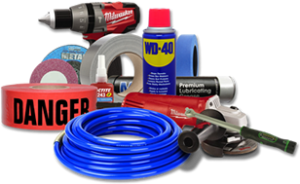
The materials related to Maintenance Repair and Operating Services/Overhaul (MRO) present unique challenges to procurement professionals. It is a spend category that companies all too often fail to gain proper control over. A category that is comprised of 1,000’s of unique SKUs across numerous subcategories where recurring spend tends not to repeat on the item level. The items that are not reordered regularly are generally classified as spot buys. Procurement tends to struggle with the concept of a spot buy. It is an unplanned purchase that the organization may have never ordered before but must order now because there is an immediate need.
For example, a line breaks down and a specific roller bearing is needed for the repair. The company does not need this roller bearing for anything else and will only order a total quantity of one. The chance that this specific roller bearing will be needed this year or even next year is unlikely. Because of the nature of MRO, this scenario takes place quite regularly. The challenge for procurement is controlling this type of spot buying activity efficiently while reducing cost. The answer to this can lie within the data. Sure, at face value these spot buys appear to be random and, like I said, do not repeat at the item level. But what about looking at it more holistically -taking a look at 2-3 years of purchasing history.
In most cases the year over-year spend by manufacturer and subcategory will be fairly consistent. Sure there are going to outliers, especially if a significant repair or change within the organization is made, but by looking at the spend holistically you will be able to identify key consistent manufacturers or even key consistent manufacturers by subcategory. This is where your focus should be, and being able to illustrate this in a clear and concise manner to your suppliers will be key to negotiating competitive pricing.
Rather than purely negotiating on the item level, you should tailor your negotiations based on the spend history. For example, you spend approximately $1M annually on Electrical Supplies (category under MRO). After reviewing year-over-year spend it looks like approximately 40% of that spend is with one manufacturer and there are very few high repeat purchases, leading to a high number of unique SKUs. It doesn’t make sense to collect pricing for specific items, rather to collect discounts for that specific manufacturer.
If the spend is substantial enough and the manufacturer allows it, you should be working with and negotiating directly with the manufacturer. With the end result being either purchasing directly from the manufacturer instead of going through a distributor or setting up a special purchasing agreement or tri-lateral agreement between the manufacturer and distributor. If the spend does not warrant these types of discussions you should be focusing on finding Tier 1 distribution channels for this specific manufacturer (Manufacturers grant their most favored pricing to their Tier 1 distributors) and negotiating manufacturer type discounts.
The point being, remember item level pricing isn’t always your best bet. It is important to dive into the data and shape a solution based off what the data tells you. MRO is a challenging category and it will take a creative solution to effectively and efficiently capture spend while reducing your cost.
About the Author: Michael Croasdale’is a Senior Project Manager at Source One Management Services, LLC. He leads sourcing initiatives in a wide range of categories for Fortune 500 companies and mid-market organizations, and acts as the direct interface between the client and the internal team. He manages a team of analysts through a strategic sourcing process that includes data collection and in-depth analysis, baseline development, RFP development, pricing negotiations and implementation.
